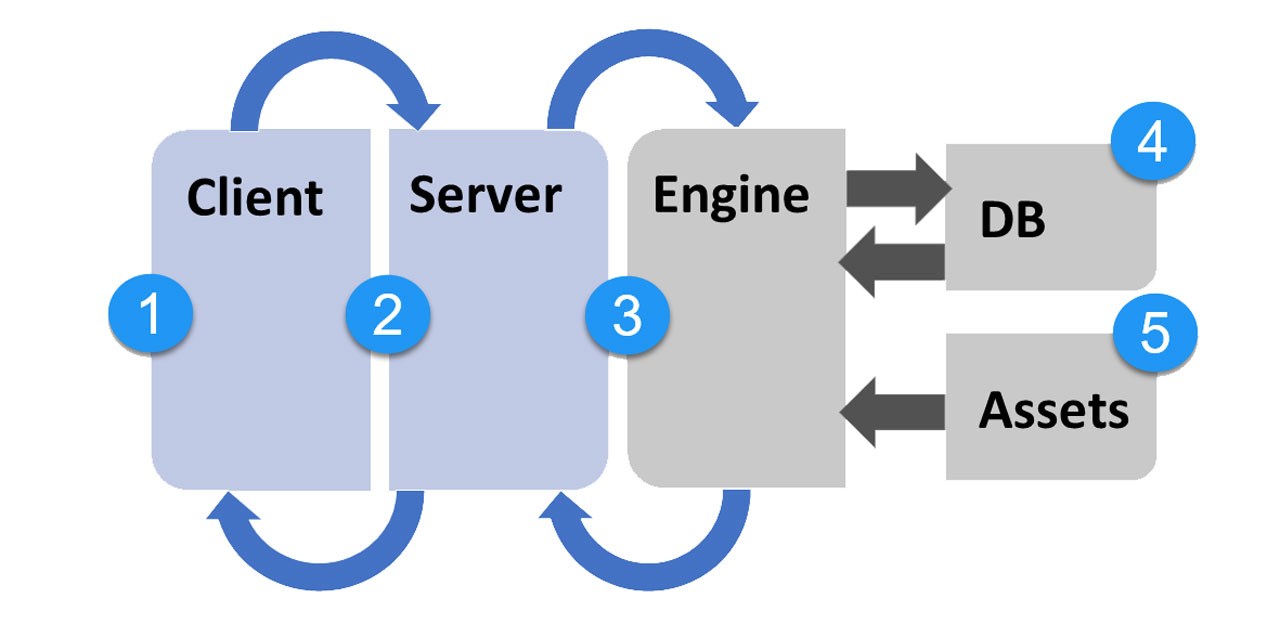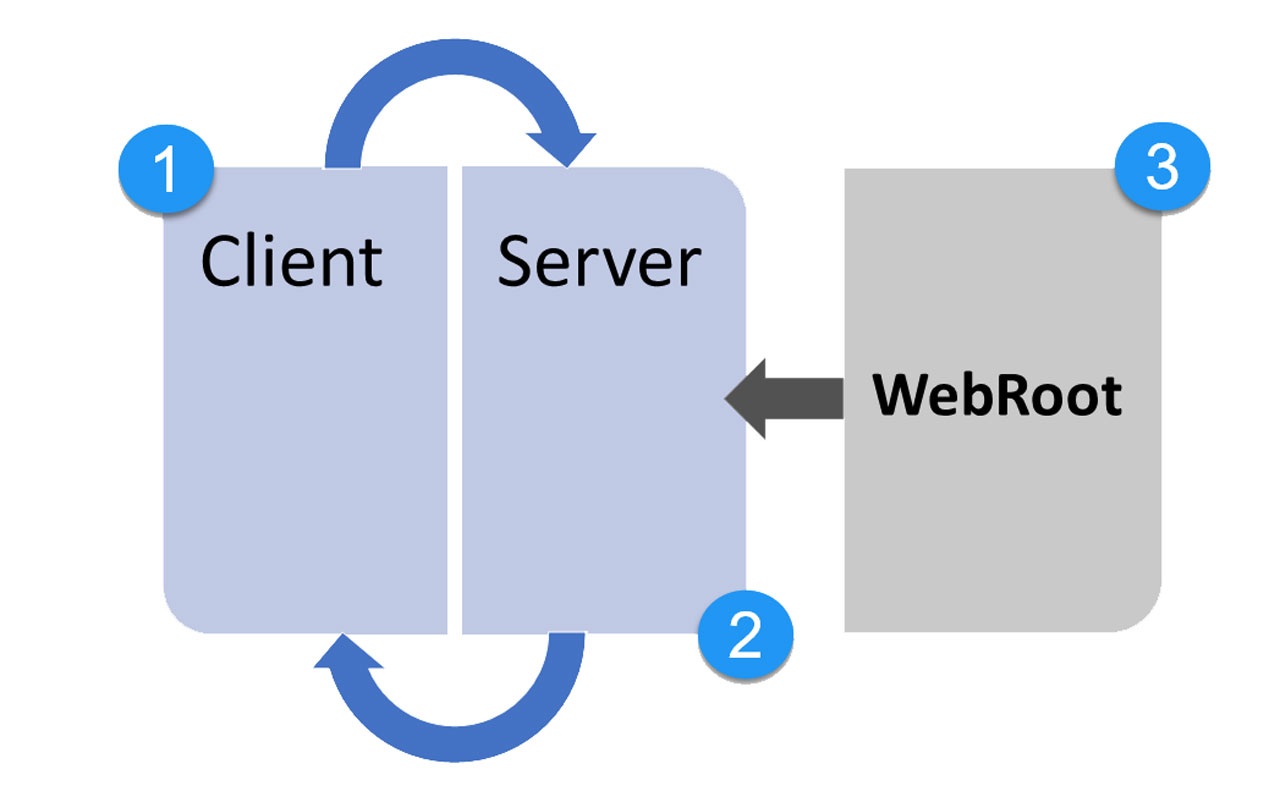2021 February, 1
This article highlights the top Open Source projects providing static site generators, so-called SSGs, in many different programming languages. You will find Jekyll one of them.
A SSG is a software tool that assists in creating websites by generating static HTML, CSS, and JavaScript files. Unlike dynamic websites that generate content on the server side in response to each request of a user, static sites pre-generate the content upfront it is served to users.
3 Minutes to read
Dynamic Webs
A typical website driven by a CMS works by building each and every page dynamically. That means fetching the content from a database to pass them over to a an middleware engine to load the content, add the required structure information, for example CSS styles, and Javascript components if needed. This means every page is assembled on demand.
Web Browser
Web Server
Rendering Engine (e.g. PHP-based)
Database (e.g. MySQL, Postgres)
Static content (Images, Videos, JS- and CSS files) and Caches
Are CMS required?
For many websites, dynamic page generation is entirely unnecessary and adds unwanted risks in terms of complexity, performance losses, and security issues. After all, the content of most websites changes, when the content authors make changes. Why the hell should a web page always be assembled on demand if there are no changes?
|
To be fair, most CMS are providing caching systems for web pages to prevent unnecessary creation processes. It is not easy to implement such a caching strategy, and in the very end, it adds the next level of complexity. |
A static site generator takes a different approach and generates all the pages of the website upfront. That does not necessarily mean that a static website is always built from scratch. Modern generators support a so-called incremental build. When there are changes detected to the content, only selected pages are rebuild.
Web Browser
Web Server
Server-side rendered (prepared) static content
Static Webs
Overall, statically build web pages having no moving parts in the deployed website. This results in browser-side caching only, the performance goes up, and static sites are far more secure because they build already and cannot be modified.
To find out what Open Source SSG are available today and their ranking in terms of popularity, go for Jamstack. You’ll find a comprehensive list of static site generators used today.
Check the most popular site generators available at the //jamstack.org/generators/[Jamstack, window="_blank"] site.


